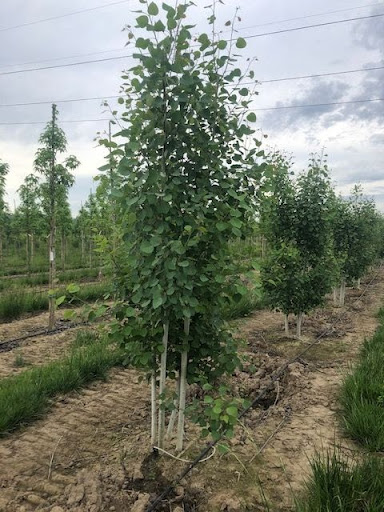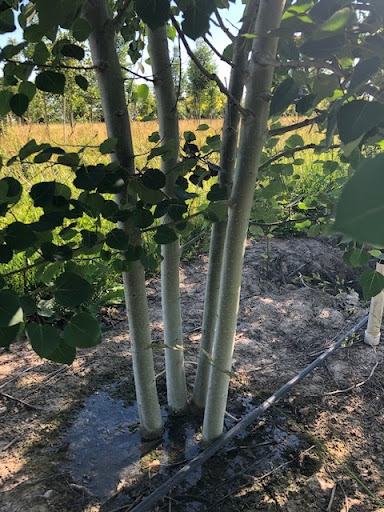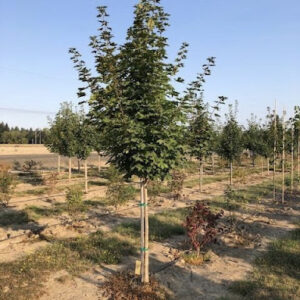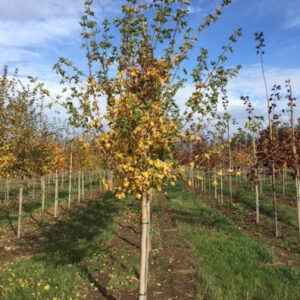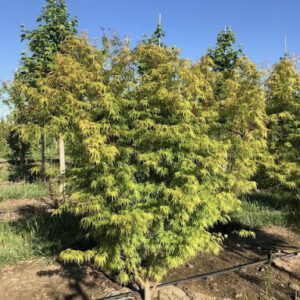Botanical Name: Populus tremuloides
Alternate Name: Quaking Aspen Clump
The Quaking Aspen (Populus tremuloides) is extremely hardy and fast growing. It is a beautiful and graceful deciduous tree, prized for its rustling foliage, attractive smooth, silver bark, and bright golden fall foliage.
In the wild, the Quaking Aspen is found growing in clumps, where each trunk is a clone growing from the same network of roots. It grows to a height of 20-50 feet with a spread of 10-30 feet.
This tree is found growing in the mountains at high elevations in rocky soil, as well as at lower elevations thriving in clay or sandy conditions. It has a large geographical distribution in North America. It is found growing in Alaska, Canada, New England, the Great Lakes area, south of the Rockies, the Pacific Northwest, Arizona, and New Mexico.
The flowers of the Quaking Aspen are catkins. The male and female flowers are produced on separate clone trees in spring. The flowers are inconspicuous and droop down from the branches. Small fruit follow the flowers, hanging in clusters.
The leaves are a glossy dark green and a rounded, triangular-shape, growing up to 3 inches in length. The margins are finely serrated. The characteristic Quaking Aspen sound comes from the flutter of flattened leaf petioles. The bright fall color is a reliable golden yellow.
The Quaking Aspen tree can be susceptible to leaf spots, particularly at lower elevations. Tree rusts, canker disease, and dieback can also affect the foliage and twigs. This tree prefers to grow in full sun and dislikes humidity and extreme heat. It is intolerant of urban pollution.

